
Today we started things off with a boat ride on the Sea of Galilee. In the middle of the lake, the sailors shut the boat’s motor off and we held our lecture there. Our instructor pointed out the regions of Galilee, Gaulanitis, and the Decapolis. This was very effective in helping me grasp what I’ve been looking at on the map. Plus, just being on the boat itself was awesome.
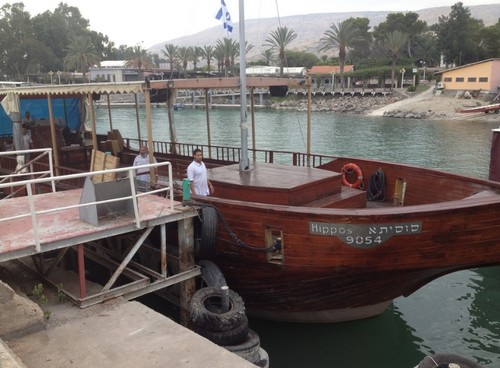
We then learned about the types of fishing that were common in Jesus’ day. Knowing some basic fishing techniques has put a little more “flesh on the bones” of the story of Jesus recruiting his first disciples in Luke 5:1-11. The fishermen had been working all night using a net that the fish would be able to see during the day. When Jesus told them to cast the net once more it was now daytime, so they were likely skeptical about catching anything at all. The fact that they not only caught fish, but caught many fish makes what Jesus did even more spectacular.
We also learned about how storms are caused on the lake. There are several valleys that lead into the area from the west, funneling and intensifying storms as they blow in from the Mediterranean Sea. Storms here can create waves up to 4-6 feet in height, which were more than enough to damage and capsize a meager first century fishing boat. Our instructor told us that even in the last 20-30 years, there have been cases of fishermen who disappeared on the lake during a storm. This reshaped my view of the disciples’ reaction to the bad weather in Luke 8:22-25 – considering the fact that a good number of them were fishermen, their fear no longer seems that unreasonable!
On that same note, a theme that we’ve discussed over the last three weeks is how the sea (generally speaking) fits into the Jewish worldview. More often than not, the waters are seen as chaotic, uncontrollable, and dangerous. Only God has power over the sea. Knowing this, the disciples’ reaction to Jesus takes on greater significance: when they asked, “Who is this? He commands even the winds and the water, and they obey him,” they were really asking “Who is this man, who does what only God can do?”
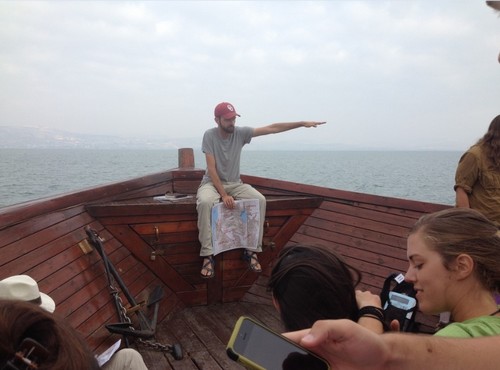
Once we were off the boat, we traveled up the eastern shore of the lake to Kursi, or Genasaret. Kursi is one of the three possible sites for where Jesus cast demons out of a man into a herd of pigs. Due to the fact that the scriptures say it was across the way from Galilee and in the Decapolis, our instructor believes that Kursi is the most probable site, both geographically and culturally. Here, we were encouraged to put ourselves in the shoes of the demon-possessed man, his family, and the community at large. Traveling to these places and experiencing them firsthand is making it easier to do so. These were real people, not just characters in a story. I hope to bring that mindset home with me.
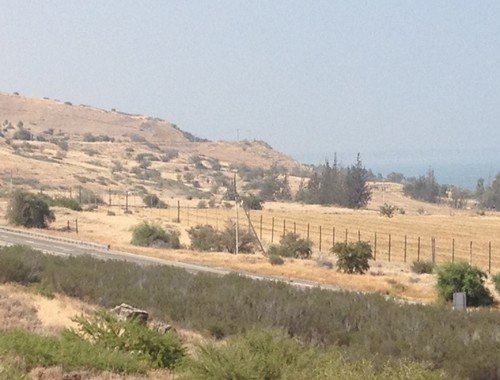
Our next stop was Qatzrin, which offered us a window into first century Jewish life. We saw a wine press, two variations of an olive press, and a typical Jewish home. Learning about first century life in particular helped me better understand various passages of scripture. For instance, the parable of the lost coin is more meaningful to me after seeing the cracks and crevices in the kind of floor Jesus was talking about. Or the story of the paralytic being lowered from the roof – now I’ve seen that kind of roof. Jesus’ statement about preparing a room for his disciples also means more knowing that Joseph was likely more than just a carpenter, but also an engineer or home builder. So many things that appear in scripture are foreign to a twenty-first century American, but they were commonplace to those with whom Jesus interacted! It’s important for us to try to place ourselves in their shoes to understand what Jesus was talking about.
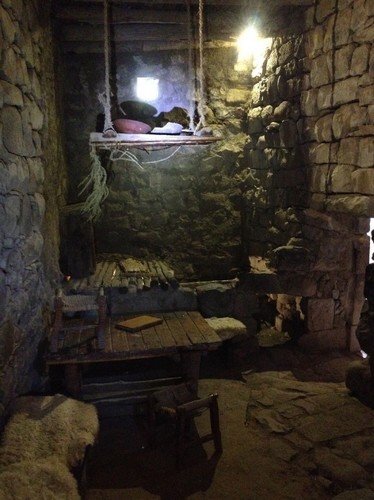
Next, we visited the Mount of Beatitudes, one of the possible locations for where Jesus preached his famous Sermon on the Mount. From where we were standing, our instructor pointed out Magdala and Hippos at different points on the lake. Magdala is a city where they salted fish, and Hippos was a city perched upon a high plateau – a city on a hill. Again, Jesus was employing accessible metaphors for his listeners.
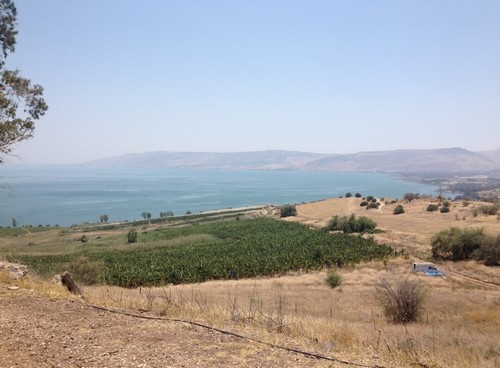
After a quick hike down the hill, we found ourselves at the Church of the Primacy of Peter. People believe it was here that Jesus restored and commissioned Peter after Jesus’ resurrection.
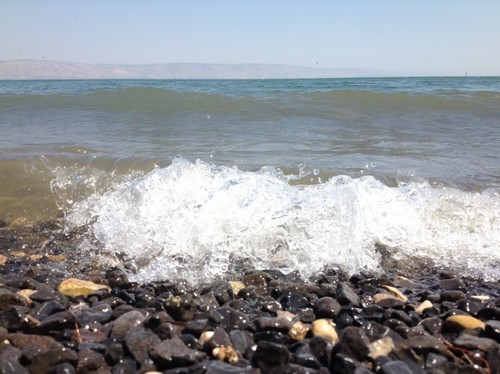
We completed our day’s journey at Capernaum, which lies on the border between Galilee and Gaulanitis. There is a church there that was built over the remains of first century architecture believed by some to be the home of Peter.
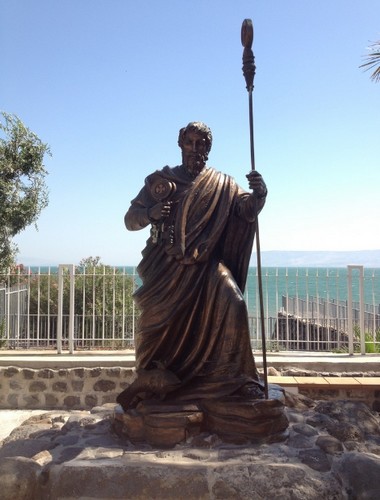
Here, our instructor used the border between Galilee and Gaulanitis as a tool to help us understand the international nature of the area, and even the competing viewpoints and politics amongst the 12 disciples. Even though Jesus’ inner circle was comprised of Jews, there were tax collectors, zealots, Hellenists, and other allegiances represented within the group. They were, on a small level, a preview of what Jesus wants to do with the world. The love of God brings people together, paying no mind to what divides them.